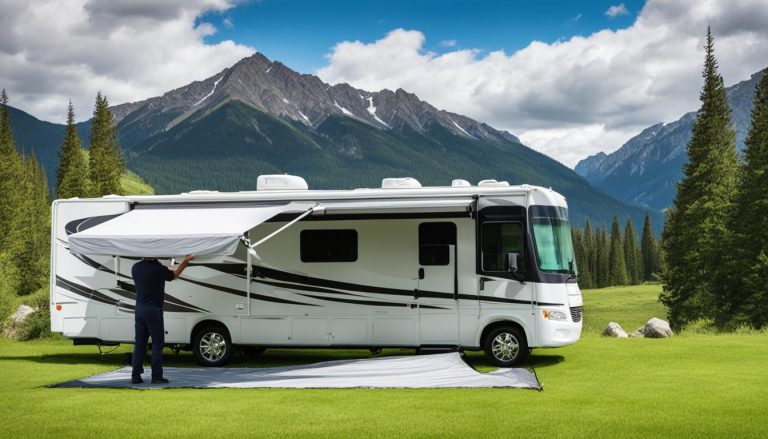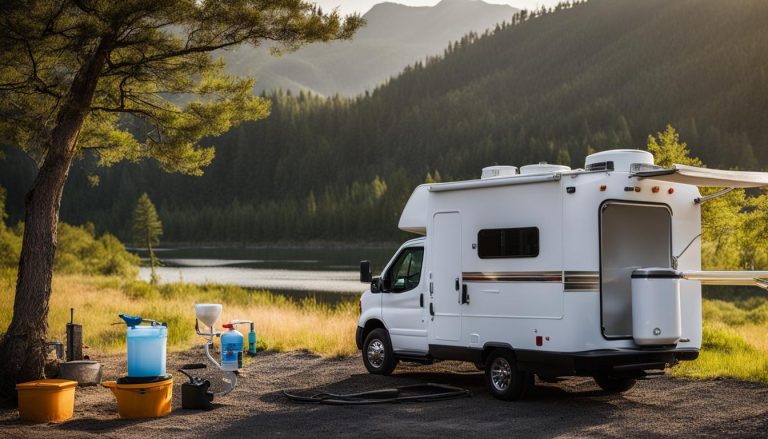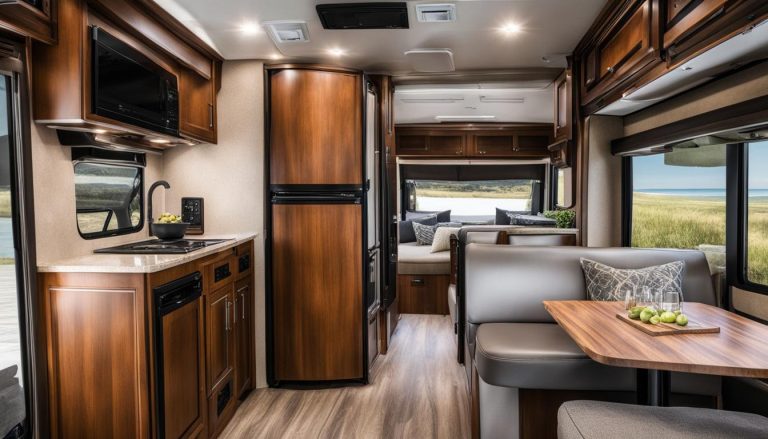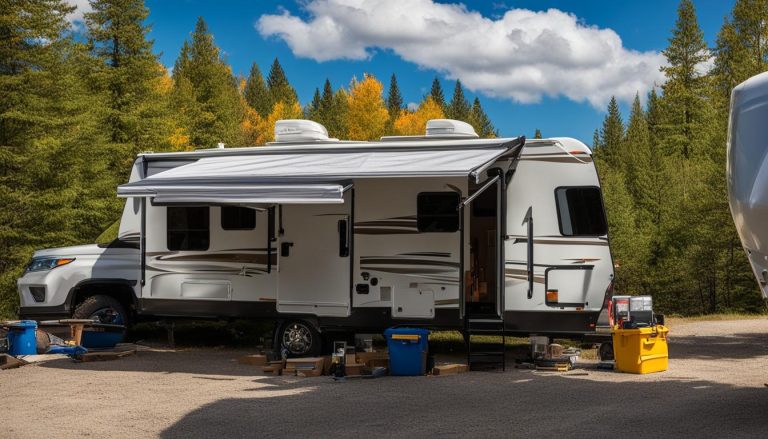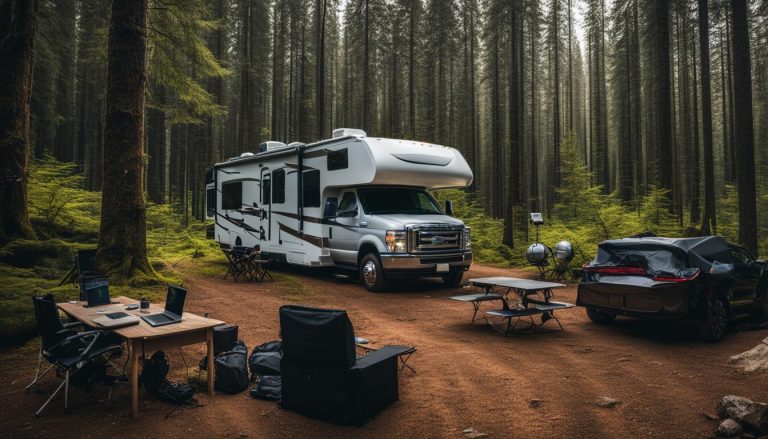RV Upgrade: Install an Electric Tankless Water Heater
gorvlifestyle.com and its partners may earn a commission if you purchase a product through one of our links
If you’re an RV owner looking to upgrade your water heater, installing an electric tankless water heater can provide you with endless hot water and added convenience on your adventures. In this guide, we’ll walk you through the step-by-step process of installing an electric tankless water heater in your RV. From the necessary preparations to the actual installation, we’ve got you covered.
Key Takeaways:
- Installing an electric tankless water heater in your RV ensures a constant supply of hot water.
- Proper preparation, including gathering the necessary tools and materials, is essential before installation.
- Follow the manufacturer’s instructions for mounting the water heater in a suitable location with proper ventilation.
- Connect the water supply lines and electrical connections carefully, ensuring safety measures are in place.
- Regular maintenance and descaling are crucial for optimal performance and longevity of your water heater.
Benefits of Electric Tankless Water Heaters in RVs
Before diving into the installation process, it’s important to understand the benefits of electric tankless water heaters in RVs. These units offer a range of advantages that make them an excellent choice for upgrading your RV’s water heating system.
Increased Energy Efficiency
Electric tankless water heaters are highly energy-efficient compared to traditional water heaters. They only heat water on-demand, eliminating standby energy losses associated with maintaining a large storage tank of hot water. By switching to an electric tankless water heater, you can reduce your energy consumption and lower your utility bills.
Reduced Risk of Water Damage
With a traditional water heater, there’s always a risk of leaks or bursts that can cause significant water damage to your RV. Electric tankless water heaters eliminate this risk by operating without a storage tank. Without a tank, there are no worries about leaks or ruptures, providing you with peace of mind during your travels.
Instant Hot Water
One of the biggest advantages of electric tankless water heaters is the ability to provide instant hot water. Unlike traditional water heaters that may take a few minutes to heat up, tankless models offer hot water on-demand. Whether you’re taking a shower, doing dishes, or washing your hands, you’ll enjoy immediate access to hot water whenever you need it.
Longer Life Expectancy
Electric tankless water heaters have a longer life expectancy compared to traditional water heaters. With proper maintenance, they can last up to 20 years or more, ensuring long-term reliability and cost savings. Investing in an electric tankless water heater for your RV is a smart choice for longevity and durability.
Space Saving
Another benefit of electric tankless water heaters in RVs is the space-saving design. Without a bulky storage tank, these units take up significantly less space, providing you with valuable extra storage room in your RV. You can utilize the freed-up space for other essentials or simply enjoy a more spacious and organized living environment.
By following best practices for installing an electric tankless water heater in your RV and meeting the necessary installation requirements, you can enjoy all these benefits and more. Upgrade your RV’s water heating system today and experience the convenience and efficiency of electric tankless water heaters.
Preparing for Installation
Before you begin the installation of an electric tankless water heater in your RV, it is essential to adequately prepare for the process. By following these steps, you can ensure a smooth and successful installation.
Gather the Necessary Tools and Materials
Start by collecting all the tools and materials you will need for the installation:
- A new electric tankless water heater
- Fittings and hoses
- Additional components as required
Having everything on hand before you start will make the installation process more efficient.
Turn off Power and Water Supply
Before beginning any work, ensure the RV’s power and water supply are turned off. This will prevent any accidents or damage to the electrical system.
Drain the Existing Water Heater
Next, drain the existing water heater in your RV. Follow the manufacturer’s instructions for proper drainage techniques to avoid any leaks or water damage.
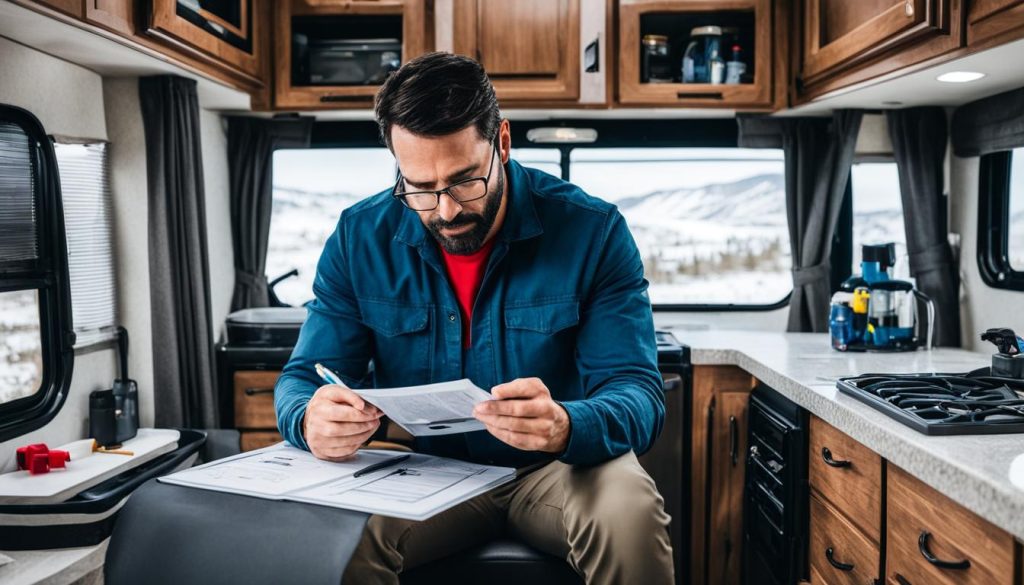
Check and Adjust Plumbing Connections
Take note of the existing plumbing connections and ensure they are compatible with the new tankless water heater. Make any necessary adjustments to accommodate the new unit, ensuring a proper and secure fit.
Plan and Prepare
Planning and preparation are key to a successful installation. Take the time to review the manufacturer’s instructions, familiarize yourself with the installation process, and ensure all necessary components are in order before proceeding.
| Tools and Materials | Description |
|---|---|
| New electric tankless water heater | A high-quality tankless water heater capable of meeting your RV’s hot water needs |
| Fittings and hoses | Various fittings and hoses required to connect the water heater to the RV’s plumbing system |
| Additional components | Any additional components recommended by the manufacturer for a successful installation |
Installing the Electric Tankless Water Heater
Now that you’re ready to upgrade your RV with an electric tankless water heater, it’s time to dive into the installation process. With the following step-by-step guide, you’ll have your new water heater up and running in no time.
Step 1: Mounting the New Water Heater
Start by selecting a suitable location for your new electric tankless water heater, ensuring proper ventilation and clearances. Follow the manufacturer’s instructions for mounting the unit securely. This will provide easy access for maintenance and prevent any potential hazards.
Step 2: Connecting the Water Supply Lines
Next, it’s time to connect the water supply lines to your electric tankless water heater. Use appropriate fittings and sealants to ensure a secure and leak-free connection. Take note of the inlet and outlet connections on the water heater and match them with the corresponding RV plumbing connections.
Step 3: Attaching the Electrical Connections
Proper electrical connections are vital for the safe and efficient operation of your electric tankless water heater. Follow the manufacturer’s instructions to attach the electrical cables, ensuring proper grounding and safety measures. Double-check all connections before proceeding to the next step.
Step 4: Testing and Adjustments
With all the connections in place, it’s time to test your new water heater. Turn on the power supply and check for any error codes or malfunctions. Adjust the temperature settings and flow rate according to your preferences. Run the hot water tap and make sure the water heats up quickly and consistently. If necessary, refer to the manufacturer’s instructions for troubleshooting and fine-tuning your electric tankless water heater.
By following these step-by-step instructions, you’ll be able to install your electric tankless water heater in your RV efficiently and confidently. Now you can enjoy the convenience of endless hot water during your travels.
Continuing on, the next section will provide essential maintenance and operation tips to ensure the longevity and optimal performance of your electric tankless water heater in your RV.
Maintenance and Operation Tips
Once the electric tankless water heater is installed in your RV, it’s important to follow proper maintenance and operation tips for optimal performance and longevity. By taking proper care of your electric tankless water heater, you can enjoy years of reliable hot water in your RV.
Regular Cleaning and Descaling:
Regularly clean and descale the unit to prevent scale formation and ensure efficient heating. Follow these steps for proper maintenance:
- Turn off the power and water supply to the water heater.
- Disconnect the water supply lines and remove any filters or screens.
- Prepare a descaling solution (a mixture of water and vinegar, for example).
- Fill the descaling solution into the water heater and let it sit for the recommended time, as per the manufacturer’s instructions.
- Flush the water heater with clean water to remove any residue.
- Reconnect the water supply lines and filters.
Regular Inspections:
Check for any leaks, damaged components, or signs of wear and tear on a regular basis. Address any issues promptly to avoid further damage or inefficiencies. Pay attention to the following during inspections:
- Check for leaks in the water supply lines, fittings, and connections.
- Inspect the electrical connections for any signs of damage or loose connections.
- Ensure the venting system is clear and free from obstructions.
- Look for any unusual noises or malfunctions during operation.
Follow Manufacturer’s Guidelines:
Familiarize yourself with the manufacturer’s guidelines for operating the electric tankless water heater. Each model may have specific instructions and requirements for optimal performance. Remember to:
- Set the temperature to the desired level as recommended by the manufacturer.
- Follow any specific start-up or shutdown procedures.
- Understand the troubleshooting steps for common issues.
- Contact the manufacturer or a professional technician for any major repairs or concerns.
By following these maintenance and operation tips, you can ensure your electric tankless water heater in your RV remains in top condition, providing you with reliable and on-demand hot water throughout your travels.
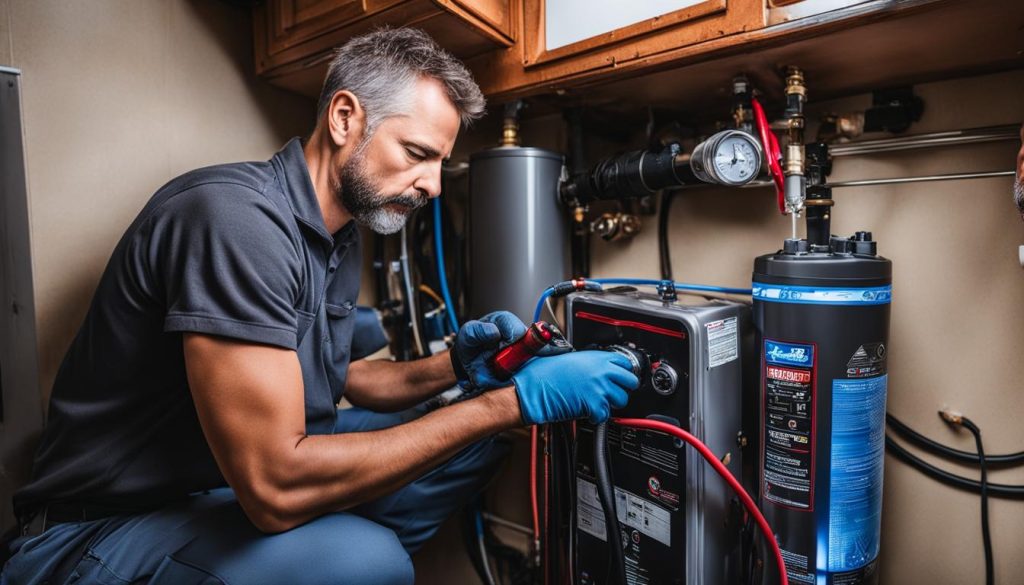
Conclusion: Upgrade to Endless Hot Water in Your RV
Upgrading to an electric tankless water heater in your RV is a smart investment that will bring you the convenience of endless hot water during your travels. By following the step-by-step installation process, considering the benefits of a tankless water heater, and properly maintaining your new unit, you can ensure a reliable and efficient hot water supply in your RV.
With a tankless water heater, you’ll no longer have to worry about running out of hot water while enjoying your adventures on the road. Whether you’re taking a refreshing shower, washing dishes, or doing laundry, you can count on a steady supply of hot water, making your RV experience more comfortable and enjoyable.
Remember to regularly clean and descale your tankless water heater to prevent scale buildup and maintain its performance. Check for any leaks or signs of wear and tear, and address them promptly to avoid any disruptions during your travels. By taking care of your tankless water heater, you can extend its lifespan and continue to enjoy its benefits for years to come.
Upgrade your RV today and experience the luxury of a tankless water heater. Say goodbye to limitations and hello to endless hot water, transforming your RV into a true home away from home.
FAQ
What are the benefits of installing an electric tankless water heater in an RV?
An electric tankless water heater offers increased energy efficiency, reduced risk of water damage, instant hot water, a longer life expectancy, and saves valuable space in your RV.
What preparations do I need to make before installing an electric tankless water heater in my RV?
Before installation, gather all the necessary tools and materials, turn off the power and water supply to your RV, drain the existing water heater, and make necessary adjustments to the plumbing connections.
What is the step-by-step process for installing an electric tankless water heater in an RV?
The installation process involves mounting the new water heater, connecting water supply lines, attaching electrical connections, and testing the unit for proper function.
How do I maintain and operate an electric tankless water heater in my RV?
Regularly clean and descale the unit, check for leaks or damage, and follow the manufacturer’s guidelines for operation.
Why should I upgrade to an electric tankless water heater in my RV?
Upgrading to an electric tankless water heater provides the convenience of endless hot water during your travels.

